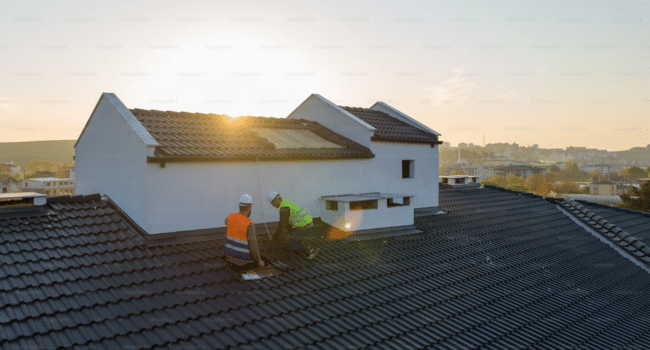Introduction to Roof Maintenance
The integrity of a roof is paramount to ensuring the safety and durability of a home. Regular roof inspections play a crucial role in identifying potential issues before they escalate into costly repairs. Over time, even the most well-installed roofs can succumb to the rigors of nature and wear and tear. Recognizing the early signs of roof damage is vital in maintaining the structural integrity of your property. Companies like H&L Roofing specialize in detecting and addressing these early warnings, thereby safeguarding your home against future adversities.
Understanding the Life Cycle of a Roof
The lifespan of a roof is greatly influenced by the materials used and the conditions to which it is exposed. Asphalt shingles, for example, may last between 15 to 30 years, while metal roofing can endure for 50 years or more. However, several factors, including climatic conditions, maintenance frequency, and the quality of installation, play a significant role in determining the actual life cycle of a roof. Understanding these variables can help homeowners anticipate potential issues and take proactive steps towards maintenance.
Common Roofing Problems and Solutions
Roofing issues can range from minor leaks to significant structural damage. Water intrusion is a common problem that, if left unchecked, can lead to mold, mildew, and even structural decay. Weather events, such as heavy snowfall, high winds, and hail, can also compromise the integrity of a roof. Additionally, unwanted pests can create unseen damage, burrowing into or nesting within the roofing materials. Solutions to these problems often involve timely repairs, regular inspections, and, in some cases, complete roof replacements.
The Importance of Professional Roof Inspections
While some roof problems are visible to the untrained eye, many underlying issues require the expertise of professionals. Companies like H&L Roofing bring specialized knowledge and equipment to thoroughly assess a roof’s condition. These inspections can unveil hidden damages and vulnerabilities, allowing for preventive measures to be taken before more significant problems arise. Regular professional assessments are essential in extending the life of your roof and ensuring the safety of your home.
Leveraging Technology for Roof Inspections
With advancements in technology, roof inspections have evolved beyond the traditional methods. Drones, for instance, offer a non-invasive way to assess the condition of a roof, capturing detailed images of hard-to-reach areas. This technological leap enables homeowners and professionals alike to pinpoint potential problems with unprecedented accuracy. Moreover, thermal imaging can reveal water damage and insulation issues invisible to the naked eye, allowing for targeted repairs that ensure a roof’s optimal performance. Such technological interventions underscore the importance of embracing modern solutions in maintaining roof health.
The Role of Eco-Friendly Materials in Roof Longevity
In the quest for durability, eco-friendly roofing materials are gaining traction. Green roofs, made of vegetation over a waterproof membrane, not only contribute to better insulation but also absorb rainwater, reducing the risk of leaks. Similarly, recycled shingles, made from reclaimed materials, offer an environmentally sustainable option without compromising on strength or longevity. These innovative materials not only enhance a roof’s lifespan but also contribute to a home’s overall energy efficiency. As homeowners become more environmentally conscious, the adoption of such materials is set to redefine roofing standards.
Preventative Measures Against Extreme Weather
In regions prone to extreme weather, taking preemptive steps can mitigate potential damage. Installing wind-resistant shingles, securing loose tiles before storm seasons, and ensuring proper water drainage can significantly reduce the risk of weather-related damage. For areas susceptible to heavy snowfall, the installation of heating cables along the roof’s edge can prevent ice dams, safeguarding the structure from water intrusion. These preventative measures, though initially costly, can save homeowners from facing far greater expenses in the aftermath of severe weather events.
Maintaining Your Roof: Tips and Best Practices
Maintaining a roof requires more than just regular inspections; it involves a commitment to ongoing care and preventive measures. Seasonal maintenance, such as clearing gutters and downspouts, inspecting for storm damage, and ensuring adequate attic ventilation, can significantly extend the life of a roof. Furthermore, implementing long-term care strategies, including timely repairs and understanding the specific needs of your roofing material, can prevent many common roofing problems.
Conclusion: The Cost of Neglect vs. The Value of Maintenance
Neglecting roof maintenance can lead to a plethora of issues, culminating in substantial repair costs or even premature roof replacement. Conversely, investing in regular maintenance and professional inspections can extend the lifespan of your roof, enhance your home’s safety, and ultimately save money in the long run. By making informed decisions regarding your roof’s care, you can ensure its longevity and performance, safeguarding your home against the unpredictability of nature.
Read more on KulFiy
Understanding Roofing Materials: Pros and Cons of Asphalt, Metal, and Tile
Install the Flat Roofing Solution in your House
3 Of The Best Roofing Materials To Consider For Extreme Weather!
